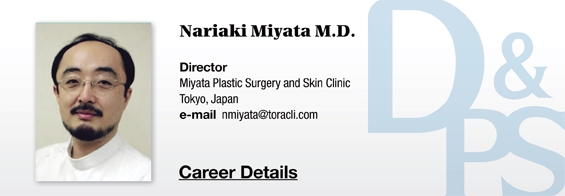
The field of aesthetic medicine has a promising future but is not without problems. As with the rest of the medical field, it will find the right direction after a general consensus is reached. One example of positive changes toward this direction is reformation of specialist licensing procedure. Starting in 2017, basic specialties such as internal medicine, surgery, ENT, neurosurgery, dermatology, and plastic surgery, etc. will be licensed by independent organizations and not by academic associations. Only doctors who already hold a basic license in one of the above fields will be able to obtain a more specialized license. For example, license in plastic surgery would be a pre-requisite for license in aesthetic surgery and license in dermatology would be needed for license in aesthetic dermatology.
In this light, only the members of JSAPS will be eligible for obtaining license in aesthetic surgery. JSAS may also be thinking of ways to obtain further specialization. However, the education system for aesthetic medicine will go through big changes around 2017. From a doctor’s point of view, the aesthetic market in Japan still holds many uncertainties but I am also hopeful that it will keep growing in the future.
What about aesthetic medicine seen from the patient or business perspectives? During the Edo Era of Japan (the period between 1603 and 1867 when Japanese society was under the rule of the Tokugawa shogunate) the ruling body established a mutual watch system under which everyone kept an eye on each other. This era was relatively peaceful with few wars but anyone who was different from others was persecuted. Such tendencies to stay “normal” and not stand out from the rest of the society are still strong in Japanese people. This is why most patients do not want any visible signs of treatment so that no one would notice that they received it. With the exception of a few cases of eye or nose surgery, most patients do not want drastic changes. In particular, those seeking to treat aging signs such as wrinkles or sagging skin want to keep the treatments a secret. It goes without saying that Japanese patients are very averse to downtime as well. Japanese patients are very sensitive to slight subcutaneous bleeding or color change. As for downtime, different standards to those used in Koreans are needed. One can often see Korean women walk in public with tapes or crusts on their face. This is unthinkable for Japanese women. Some even go so far to take a week off from work for a single melasma treatment.
This is why Japanese doctors often focus on downtime rather than efficacy when choosing a device. On the other hand, efficacy is more important in acne treatment or scar removal. Patients seeking these treatments are very accepting of even a long downtime as they expect drastic improvement. In other words, when follow-up treatments are not necessary, patients are willing to deal with downtime.
Japanese people also lack correct understanding of the injectables. In Japan, injectable substances such as hyaluronic acid, hydroxyapatite, and botulinum toxin are used much less frequently than in Korea. Many people are not comfortable with the idea of injecting a foreign substance into their body. This is why device treatments are more commonly used.
[Advertisement] MAGNUM(Q-switched Nd:YAG Laser) – Manufacturer: (www.i-dana.com)]
Japanese patients often shy away from drastic treatments and are unenthusiastic about facial injections. Doctors are also very cautious about device treatments. As a doctor who understands the need for introducing new, innovative treatments, I find such tendencies of Japanese doctors and patients very limiting. More doctors are becoming enthusiastic about new treatments and leading a healthy trend toward improvement but many jump into new treatments without sufficient knowledge or skills. Despite all these hurdles, I believe that aesthetic medicine will continue to grow in the right direction.
I would like to add that I learned a lot from my interactions with Korean doctors. It was very kind of them to welcome me, a stranger from Japan, and even share their secret know-hows under the condition I would not tell other Korean doctors. Moreover, it was great pleasure and an eye-opening experience to meet manufacturers of world-class medical devices in Korea. I gave many talks at Korean academic conferences in the past few years and my books were translated and published in Korean.
Despite our differences, Japanese and Korean doctors have much to learn by communicating with each other. I do not know much about politics or history but I know that we are only two hours away from each other by plane and can be good neighbors. I believe Korean and Japanese doctors can exchange information and visits to provide better medical service to the patients of both countries. Through extensive evaluation of medical devices, I hope Japan will become a good market for Korean medical devices in the near future.
.jpg)
Figure 2. Dr. Nariaki Miyata contributes toward advancing Japanese aesthetic medicine by giving many talks in Japan and Korea.
-To be continued




















